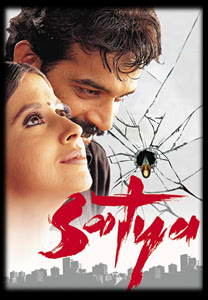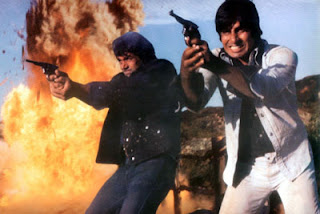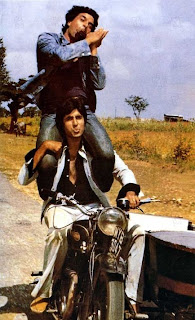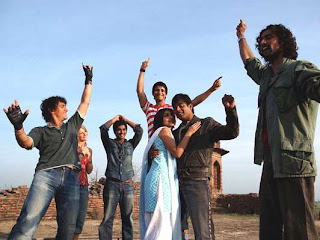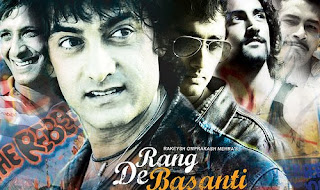
Satya is a striking story of the criminal underworld of Mumbai. The audience sees Satya, the title character, move through his life in Mumbai, in the context of two lives: one with his girlfriend, Vidya, and one with his gang, lead by Bhiku. It is important to note the intended purpose of this movie and its obvious social commentary. The movie aims to describe the cycle of gang violence, how it never stops, and how angry young men get pulled into the allure of having a group that acts as practically a second family. The cycle of poverty and violence that keeps cities like Mumbai constantly in the throes of violence are because of these gangs. Gangs encourage an atmosphere of great friendship and brotherhood – gang members look after each other and help each other, as was seen several times: when Bhiku give Satya a job and a place to live right after he gets out of jail, when Bhiku pays for the gift Satya wants to get for Vidya, the invitations to weddings, parties, and big events in each others lives. The gang is essentially Satya’s family, and probably feels more like a family because his real family is all dead. This ‘patronage’ relationship encourages people to join gangs, and makes people feel extreme loyalty to the gang that they join. Satya’s own loyalty is shown as unshakable, to the point where he revenges Bhiku’s death by killing Bhau. Because gangs make life better for angry young men like Satya, more are encouraged to join, and in that process the gangs make angry, young men out of people they victimize, or out of people whose families they kill. It is a never ending cycle of violence that just creates generations of angry, violent, young men who want to join a gang so they can be a part of something bigger than just themselves, so they can survive, or so they can make money.
At the very end of the movie, the comments show the intended purpose of the movie. The movie isn’t meant to glamorize gang life, or even tell the individual tragedy of Satya and his love, Vidya, but to possible deter gang violence from occurring in the future.
This film is an attempt on my part to reach out to all those people who took to violence as a means for their living. At the end of it, if even one of them out there looks into himself before he takes out his gun the next time, and understands that the pain he inflicts on others is exactly the same as he would suffer himself, I would consider this effort worthwhile.
The last point I want to make individually, before I delve into the other reviews, is that the characters in this movie, despite being murderers and criminals, are likeable. Satya’s obvious feeling for Vidya and friendship with Bhiku are genuine human relationships that are easily relatable and likable. Bhiku’s personality is infectious and his recklessness is almost endearing. And, let me say, watching Bhiku dance was one of the few times I actually smiled watching the movie. The point I’m trying to make is that the characters in this movie, despite being bad people, are likeable. I think the last line of the movie says it best: “My tears for Satya are as much as they are for the people whom he killed.”
Adam’s review
I thought Adam’s analysis of Satya’s and Vidya’s relationship and what they represent is important to understanding Satya. Vidya represents a force of “knowledge” whose purpose is to “discern the true…from the false.” Keeping in mind that Satya means truth, I think this has quite the implication for the concept of truth in the movie. When Vidya and Satya are together, Vidya’s presence illuminates the truth of the man Satya might have been if he had not been dragged into the gang – intelligent, thoughtful, happy. But I also think that Satya never gets the chance to experience the full truth of what he could be because he never escapes from the gang, and he never even tells Vidya the truth about him. All of Vidya and Satya’s interactions are tainted with the lie he is keeping from her: the scene at the movie theatre, meeting Bhiku and trying to disguise their job, and even the ring he gives her is bought with Bhiku’s money – money aquired from extortion and gang activity. Nothing between Vidya and Satya is genuine – except their four day vacation outside of Mumbai, the four happiest days of Satya’s life.
Ed’s Review
I thought Ed’s interpretation of Satya as the Mahabharata was quite accurate, but I did have some interesting points to make in accordance with some of the claims. I thought it was interesting how Bhiku’s group represents the Pandavas especially because in the Mahabharata the Pandavas are morally superior to the Kauravas, who are really the ‘evil aggressors.’ It seems to me that when comparing Bhiku’s gang and Guru Narayan’s gang that neither is necessarily better than the other, both are murderers, criminal factions that harm innocent people. However, I guess that Bhiku’s gang is involved in lesser crimes of extortion, rather than human trafficking that Narayan’s group is infamous for.
I also liked Ed’s point about how the he believed Satya to be a metaphor for Indian society and politics. I thought his analysis fit the article, but also think it is important to note that the corruption of government is a big part of the movie and a big part of the analysis. The abandon at which the police gathered up and murdered the criminal groups of Mumbai was surprising and horrific. I was not expecting such violence from the so-called ‘upholders of the law.’ I thought it was reminiscent of the Emergency, a time when the government abandoned all fronts of democracy vanish and the government pretty much declared martial law. The images of men in brown uniforms beating, torturing, and killing people were not only disturbing to me (an American audience), it probably resonated even more with an Indian audience because of how unstable their government system is, and the occurrence of police and government corruption.
While the police completely ignore the process of the law, it almost seemed to me that the people were more afraid of the police than they were of gangs. The news programs dubbed the police “murderers and butchers.” There were human rights protests. The media looked as if it had a heyday with the amount of violence in the name of the law. The police force claimed they were cleaning up the criminal activity, but to the outside viewer, it certainly looks as if they are becoming just as bad as the criminals themselves, if not worse. At least the criminals acknowledge that they are behaving badly.
Rachel’s review
I had a different view than Rachel’s of some of Satya’s characteristics. Although I agree that Satya’s background is ambiguous and that the director chose to portray him this way to make the character and his situation universal instead of specific, I think that once we meet Satya, it is very clear that he is a violent character. He was clearly doomed to a life of violence and killing from the very beginning, even if he had avoided getting involved in a gang.
I think there is a clear progression from Satya as violent and powerless to Satya as violent and powerful. When the movie introduces Satya’s character, we see the first conflict he gets into when a gang member demands money from him. Instead of just walking away or giving them money, Satya slashes one of them across the face with his own knife. He gets beaten up because of this, but despite being powerless to do anything about the gangs threatening him, he still reacts violently. The same event occurs when he attacks Jagga, the act that puts him in jail. He is essentially powerless within the system (he isn’t part of a gang and has noone to guard his back), but he still reacts violently and fights with any threat. By the time leaves jail, he has befriended the head of one of the city’s most powerful gang leaders and establishes himself in a place of power within the system. Now, instead of just violence, Satya also has the full man power and gun power of the Mathre gang behind him. With that assured power, he kills Jagga. Eventually, throughout the story, his actions become more and more violent: from having gun fights in the middle of the streets to kill Narayan, to killing the police commissioner, to causing the riot in which several innocents were killed. This escalation of violent acts tells me that Satya was a very violent young man to begin with and just got bolder and bolder as his gang became more powerful. Maybe I’m underestimating Satya, but I think he was always a violent person. The gang that he was a part of focused his skills and gave him power and therefore he made the change over the course of the movie from a violent, angry young man to a violent, angry mass murderer. The only time he isn’t angry, the only time he isn’t killing people is when he is with Vidya. This relationship proves to be the last thread of humanity that Satya hangs onto till the very end of the movie.
